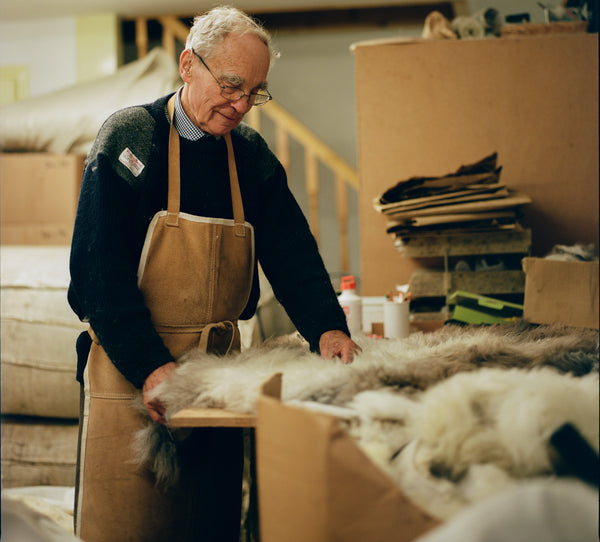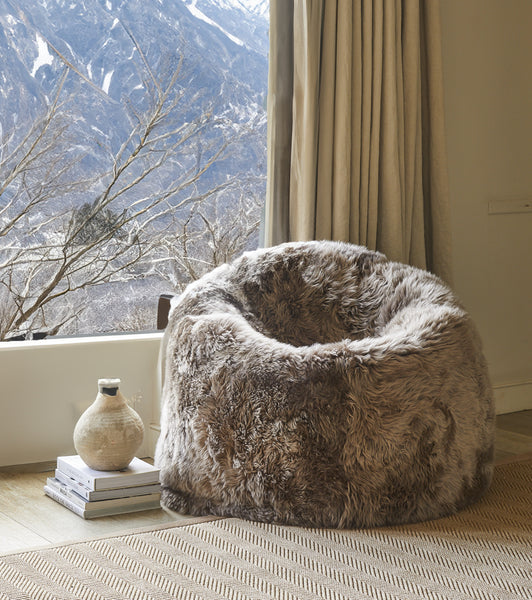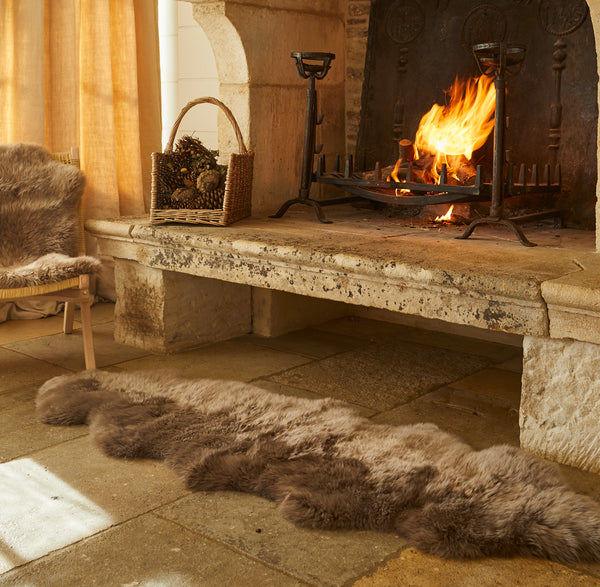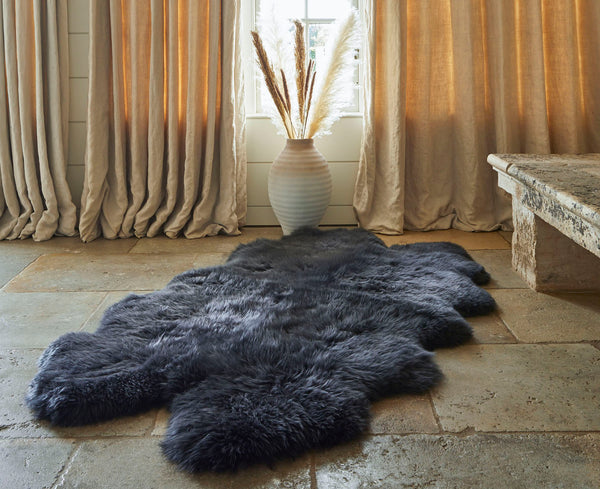Why Wool Matters
Wool is an extraordinary fibre from the fleece of the sheep. Known as a longevity fibre, this ecological material grows and regenerates on the backs of about a little over a billion sheep. These animals are being sheared annually but some breeds need to be sheared more than often as they renew their wools faster than the others. With the number of sheep providing the globe a wealth of this versatile biodegradable fibre, it is no wonder there are so many various sheepskin rugs and products being sold in the market made from this sustainable fibre material. We explore 'Why Wool Matters'.

Dating back about 1000 years from the time the first farms were formed, Mesopotamians were the first ones to discover wool when they found out that they could cut the wool from their sheep and utilise it to make cloth. And throughout the human history, wool has played a consequential role. Its importance spans various aspects including clothing, trade, economics, culture and even warfare.
The production and trade of wool have been major drivers of economies throughout time. Sheep farming and wool production were vital components of agrarian economies in regions such as ancient Mesopotamia, Egypt, Greece, and Rome. In medieval Europe, the wool trade became a cornerstone of the economy. It was during the Bronze Age (2300-800 BCE) that the use of wool rapidly spread across Europe.
Wool products are indeed popular for several reasons and throughout history. Two of the top reasons are their natural properties and cultural significance. Here are a few more elements that contribute to their popularity:

Insulating properties. Wool fibres have natural insulation.This makes wool a good choice of product to purchase as its suitable to utilise for both cold and warm climates. In cold seasons, winter in particular, it's the perfect tool to trap heat close to the body. This is why most people tend to equate wool with winter and why we do photoshoots for our British made Sheepskin Beanbags in The Alps. But this textile fibre is also ideal for summer as it can help effectively absorb and evaporate moisture which can aid in regulating one's body temperature, giving way for a more comfortable feeling. Its moisture management property is remarkable.

Durability. In choosing products to invest in, the main goal is to go for something that has the ability to withstand pressure, wear, and damage and wool products perfectly fit this description. With their resilient and elastic fibres, wools are known for being durable. It's no surprise that they can withstand pulling, stretching, bending and similar pressures. So if you are looking for a product that can retain their shape and integrity over time, wool is simply best choice.

Fire Retardant. When a product’s property of materials or components prevents or holds back the passage of excessive heat, hot gasses or flames under conditions, it sure has a lot of advantages. Some products are chemically treated, manufactured to be fire-retardants whereas wool made products are natural fire-retardants.
Its fibres contain moisture which make it difficult to ignite and does not propagate a flame. Instead it leaves a soft, crushable dissipating ash when it burns as it can extinguish by itself when fire is removed. This is made possible because it's made up of keratin protein, the same protein found in human hair, hence it's recognised as the most flame resistant of all natural fibres around.

Biodegradability. Another remarkable nature of wool is it has the ability to decompose after interactions with biological elements as it is 100% natural. This is what sets it apart from synthetic fibres, which in terms of decomposition, can take hundreds of years to do so. Wool biodegrades within the span of three months to four months and as it breaks naturally, it gives back to the environment by releasing essential nutrients and valuable chemical elements to the soil like nitrogen, sulphur and magnesium which are absorbed by growing plants.
As wool is renewable, there will be a ceaseless or perhaps perpetual supply of wool provided of course there is grass to graze on for sheeps so they can produce new fleece every year. And with wool’s biodegradability properties, a continuous biological life cycle will be sustainable.

Sustainability. When managed responsibly, wool production can be environmentally sustainable. Around the globe, natural pastures are home to billions of sheep as these are where they graze on. Such is also a huge aid in preventing soil erosion and a great hand in maintaining ecosystems. In addition to that, ecological balance farming practices have greatly help cut back on the environmental impact of wool production.
The cultural and traditional significance of wool is all-important. In the modern society we are moving in, despite the advent of synthetic fibres, wool remains a valued material. The continuous demand for eco-friendly and sustainable materials has led to a resurgence of interest in wool by a lot of individuals and industries due to its incomparable inherent qualities.
Throughout history, the significance of wool lies in its multifaceted role as a cultural, pragmatic, economic, and a symbolic resource that has shaped, for a millennia, the human civilization.

Elevating your interior design with wool.
While there are several uses of wool as enumerated above, one of the most popular applications is in home decor and interior design.
In a world where trends come and go, wool stands as a timeless symbol of elegance because of its versatility. Its innate qualities and harmonious blend of form and function continue to captivate homeowners and interior designers.
There’s just a cosy feel and warmth that wool materials bring when integrating it with interior design. They also add texture and dimension to any space, transforming something ordinary into a striking work of art. Wool is a testament to the enduring timeless beauty, and anyone with appreciation for such can easily spot a great piece of wool decor when they see one.

